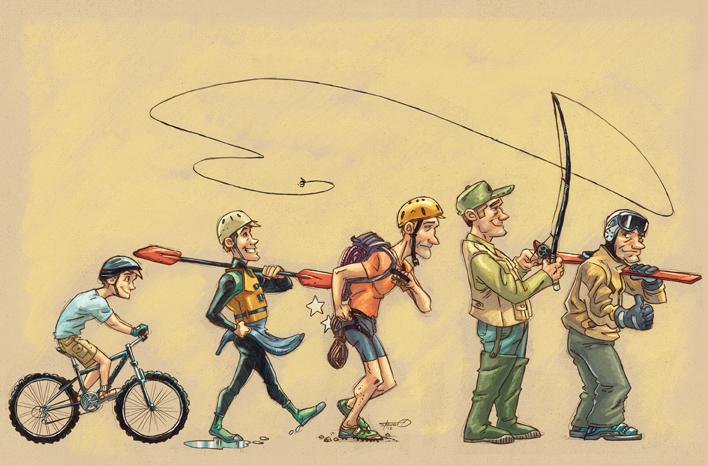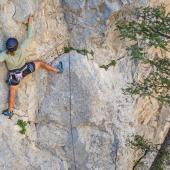Outdoor Equilibrium
Finding balance in outdoor adventure.
Like many before me, I arrived in Bozeman full of proverbial piss and vinegar: a rabid recreationalist, indiscriminately attacking every outdoor adventure possible. My drive far outpaced my experience, though, and within a few days I almost died in an avalanche. It’s no small wonder that I made it through my first few years out West. But I did, and soon I was on the fast track to see just how hardcore I could become. How about skiing the Ridge, climbing Gallatin Tower, and kayaking the Mad Mile all in a day? Sure, you betcha. Alright, now ride your bike from campus to the M, run up to Baldy and back, then bike home… after laying sod all morning. Fear of missing out led to a “go, go, go!” lifestyle that left little time for recovery.
The years slipped by this way, without major incident. Eventually, a trip to the Grand Teton appeared on my radar, and before I knew it the wristwatch inside my fleece hat was beeping—4am was here. It was October; ice filled the cracks of the Lower Exum and daylight was at a premium. The sun had already set by the time my friend Joel and I began our downward traverse onto the Wall Street Ledge—and I’d left my headlamp at camp. Joel was on a long runout, his first piece of protection 15 feet below me—a misstep could mean one hell of a fall. With a pig full of mountain gear on my back and 1,000 feet of exposure tugging at my feet, it finally dawned on me that disaster was a real possibility. We backed off and made it back to camp about three hours later.
Joel’s new plan was the less-common Stettner Couloir—but I was not having it. A few years prior I might have gone for it, but my reach was rapidly exceeding my grasp and it had almost cost me everything. Joel asked if my career as an alpinist was coming to a close—which was a pretty heavy accusation. The wind rocked our space station at the lower saddle and I contemplated my wants, feelings, and motivations. I was using borrowed, ill-fitting mountain boots and didn’t have proper gloves. Although Joel was a professional mountain guide, I was a research associate. Shivering in the thin tent on the side of a mountain, I was scared to death—not only of the climb, but of the thought that I’d lost my drive for adventure. Joel wanted to stay and give it another shot, but it was too late—the mountain had gotten the best of me. We went home. As Dirty Harry said in Magnum Force, “A man’s got to know his limitations.”
Back in Bozeman, I shifted gears and took up a new pastime: fly fishing. Now engaging in one of southwest Montana’s least extreme activities, I was afraid of falling victim to fear and laziness. But after a few trips on the water, I soon learned what any seasoned angler knows: catching is better than fishing, but fishing is a priceless time for reflection. As it turns out, the elusive ten-pound brown in the East Gallatin knows best. While young trout go for every hint of a meal, inhaling insects with reckless abandon, the old trout is much more patient and selective. Years ago, I certainly made more turns and climbed more vertical, but today my objectives are bigger, more refined, and have a higher success rate with fewer incidents. In retrospect, the Lower Exum was the most serious climb I had done to date—and my decision to back off was wise and may have prevented a miserable incident.
After a few months of fishing, my drive for adventure slowly returned—and it was a drive tempered with moderation and wisdom. That winter, I went on to shred the backcountry; that spring, I skied steep mountain lines; and come July, I calmly reflected from my tube on the Madison. Guess what? All was still right with the world.
And so it goes: we age, we mature, and each year involves less intensity and more consideration. We still get out, we still get after it, but we strive to establish equilibrium. For folks like us, a life without adventure is not worth living, but a life without balance can degrade far too soon.













